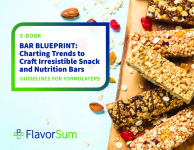Bakery sector faces salt and fat reduction challenge
Barbara Gallani, the FDF’s Biscuit, Cakes, Chocolate and Confectionery Sector Manager, highlighted industry concerns about the difficulty of maintaining products’ flavour, texture and shelf life at the 2008 Salt, Sugar and Fat Reduction Reformulation Symposium. She said that while the bakery sector has already made huge progress in reducing salt and saturated fat in an effort to meet the FSA’s voluntary targets, reformulation still presents great difficulties, both technically and in maintaining a good flavour which remains acceptable to consumers.
“We believe that what FSA is trying to achieve is very challenging,” she said, “Especially considering the need to change recipes and processes to lower levels of hydrogenated vegetable oils, salt and saturated fat without compromising taste and texture.”
In particular, she acknowledged that it is not always easy to remove salt from bakery items, especially when it is used as a preservative or to control the fermentation of yeast. Even where it is solely used to influence flavour both the FDF and the FSA agree that salt can only be reduced gradually in order to maintain consumer acceptability.
Even so, UK cake and biscuit manufacturers reduced salt content by 16% to 50% between February 2006 and March 2007, on top of a previous reduction of 20% to 40% between 1999 and 2006.
Salt reduction strategy
The FSA reviewed its salt reduction strategy in July and revised targets for those sectors where it felt there was further scope for improvement. For cakes, the salt content target for 2010 was reduced from 0.6 per cent to 0.5 per cent, eventually declining to 0.4 per cent by 2012.
A spokeswoman for the FSA told BakeryandSnacks.com: “The 2010 targets were set at levels that were challenging but would be achievable by industry in the timeframe, whilst also making an impact on consumers’ intakes. Experience has taught us that we need to be realistic when setting targets. Following this review, we set new 2012 targets to maintain progress towards the 6g population daily intake.”
Typically over half of the sodium in bakery products comes from sources other than added salt, such as raising agents and salted butter.
Saturated fat strategy
The FSA also aims to work with the food and beverage industry to reduce the average amount of food energy coming from saturated fat per person from the current 13.3 per cent to 11 per cent for everyone over the age of five by 2010, another theme explored by FDF’s Barbara Gallani at the London conference.
She said: “FDF’s BCCC sector group members will continue to work with FSA on saturated fat and energy intake reduction to ensure that the technical limitations and costs involved are fully understood and taken into account. FDF agrees that consumer acceptance of reformulated products as well as better education and information are key to the success of FSA’s saturated fat and energy reduction initiative.”
She said that more focus should be placed on achieving a balanced diet rather than on reducing single ingredients.












